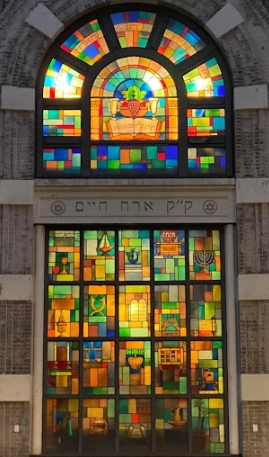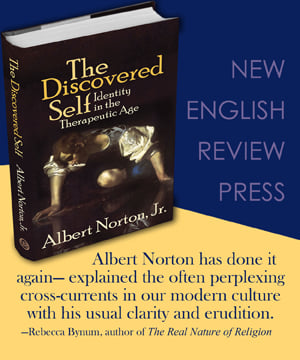By Phyllis Chesler
On Monday evening, March 17th, Congregation Orach Chaim held a memorial service for its late, revered senior rabbi, Michael Shmidman z”l. I was unable to attend in person, but I was glued to the mercifully provided livestream. The speakers were Rabbi Emeritus of the Congregation Kehillath Jeshurun; Haskell Lookstein, former president of Yeshiva University; Richard Joel; James A. Lassner, a fifth-generation member of Orach Chaim and a former OC president; David Zinberg, the rabbi’s son-in-law; and our current senior rabbi, Benjamin Skydell. They all spoke about a man who lived in many worlds–and was true to each one; an American who loved sports; a secular and Torah scholar who loved teaching; a Jew who performed each mitzva with joy and “alacrity;” a rabbi who was welcoming, inclusive, warm; a rabbi who knew so much Torah and many of the major commentaries by heart; a Jew who never hesitated to Do Good.
president of Yeshiva University; Richard Joel; James A. Lassner, a fifth-generation member of Orach Chaim and a former OC president; David Zinberg, the rabbi’s son-in-law; and our current senior rabbi, Benjamin Skydell. They all spoke about a man who lived in many worlds–and was true to each one; an American who loved sports; a secular and Torah scholar who loved teaching; a Jew who performed each mitzva with joy and “alacrity;” a rabbi who was welcoming, inclusive, warm; a rabbi who knew so much Torah and many of the major commentaries by heart; a Jew who never hesitated to Do Good.
Rabbi Michael Shmidman z”l lived Torah; therefore, he was unfailingly kind, even to mighty sinners such as myself.
In 2003, Rabbi Shmidman found me. Or, rather, he welcomed me into Orach Chaim with great enthusiasm.
We had just moved from Park Slope in Brooklyn to the Upper East Side, and I’d only begun my search for a shul. I wandered into our own, very nearby, Orach Chaim.
Rabbi Shmidman greeted me. He said that he knew who I was, and he asked if I wanted to see the shul’s treasures–I did–and so he led me down the aisle, went up to the bima, and flung open the doors to the Aron ha-Kodesh, and showed me all the Torah scrolls. It was such a unique and unexpected act.
In a sense, Rabbi Shmidman, served as a tikkun for the Bat Mitzvah I never had, not when I was growing up in the 1940’s and 1950’s in an Orthodox Jewish family in Boro Park. I know, it wasn’t done back then–but I took it very hard. He served as a tikkun for all the Orthodox rabbis in my childhood and adolescence who did not think that girls or women could become Torah junkies or serve in any religiously knowledgeable capacity. That’s changed now–but back then it was what it was.
After I met Rabbi Shmidman, we attended shul every Shabbos and every chag. I also attended many of the rabbi’s Talmud classes between mincha and ma’ariv on Shabbos. He only once asked me to deliver a lecture on antisemitism, which I was honored to do, but I really did not want to stand out or be a leader of any kind at Orach Chaim. I’ve done quite a lot of that elsewhere, and I now wanted and needed something else: A modern religious community and the joy of Torah study. I wanted to be one of the congregants, to sit and read the parsha while Chazan Stark led services and others leyned it for us. For years, I had worn a kippa in shul, but I chose to wear a ladies’ hat–as most of the women did. I had not come to make a point of any kind.
At my most recent non-Orthodox shul in Brooklyn, once I’d begun to write about Israel and then even dared to publish a book titled The New Antisemitism, some shul mates would literally interrupt my prayers to quarrel with me. They thought that I was unacceptably too pro-Israel, too pro-Judaism. They also did not approve of the Jerusalem-based women-only prayer group known as Nashot Ha-Kotel, with which I was involved. An accusatory progressive-regressive mob they were.
I will never forget Rabbi Shmidman’s Neilah service and shofar blowing on Yom Kippur. Or his drashes, which he delivered in at least three or four languages simultaneously: English, Hebrew, Yiddish, with some Aramaic words sprinkled in like spices from ancient Babylon. He spoke quickly and softly and one had to really listen to him very attentively.
But most of all, I remember this: I attended the rabbi’s Tuesday evening Torah classes at his home on East 95th St. There we would sit, Rebitzzen Chai at one end (Chai, dear, may you continue to be consoled among the mourners of Zion and Jerusalem); the rabbi sat opposite her, and he’d “give over” his Torah. Back in the day, his chevrutah, Ya’akov Kutten, would sit next to him; Carolyn Kutten was there for a while; Roz Eisenberg, Mishael Ben Azaria, Carrie Hirtz, and my partner, Susan L. Bender, all came religiously; Naomi Wolinsky and Daniel Sinclair sometimes joined us.
Rabbi Shmidman would never write his devrai Torah down, although I believe he had notes. Once, Chai asked me to help her have him record his devrai Torah and perhaps transcribe and edit it. I was honored by the request. I’m a smart aleck and I thought I had a way to make this happen.
“Rabbi what did Rashi say about this?”
He’d think, just for a half minute, and then recite from memory Rashi’s view on the matter at hand.
I said: “But we would not know it if he had not written it down.”
The rabbi was as stubborn as he was sweet and so he said that he believed in the living Torah, the Torah she b’aal peh, and that he would never participate in writing it down.
Imagine what it meant to have an entire congregation follow their rabbi’s lead in welcoming in from the punishing wilderness a radical feminist–and a farbrenta Zionist.
At Orach Chaim, I found a welcoming community of Jews. The “ladies” in hats were also stockbrokers, lawyers, fashion designers, traders, teachers, psychotherapists, physicians, social workers, artists, event planners, administrators, one non-Orthodox rabbi, and businesswomen of all kinds. I was comfortable among them because I’d already been moving in the Orthodox world through my chevrutah, the late, great Rivka Haut z”l. We had often attended Avi Weiss’s shul in Riverdale together, I’d been celebrating Shabbos and Chagim with Rivka and her wonderful family since 1989, and I joined her in her agunah activism.
At Orach Chaim, Rebittzen Chai sat opposite us at the far end of the balcony, closest to the Aron. Her daughter Atara sat with her and, from time to time, other daughters joined them. I would usually sit next to Rabbi Paulette Posner, and we might, very quietly, exchange some thoughts about the parsha. Danielle Lassner (always in a splendid Spanish mantilla), and Mara Lassner always sat to my right. Sometimes Mara’s mother, Alice Scheinwald, joined us as did Yona Verwer.
Libbe Englander, Judy Schwartz, Marilyn Adler, Renee Erreich, Lauren Presser, Linda Ossad, and Aliza ben Azaria all sat opposite us. Phyllis Korff, Ellen Korn, Judy Schwartz, Carrie Hirtz, and Roz Eizenberg, Alexandra Iosso, and Janice Korff all sat in the same row but a little closer to the entrance door; Ricki Freeman Platt (always unbelievably fashionable), Francine Herbitter, the very learned Naomi Wolinsky, and Lynn Scheck, married to our gabbai, sat at the center as did Sandy Welkes. I am not sure where some others of us sat. Ilene Curtach, Bonnie Pollak, Alexandra Leavy, Zella Goldfinger, Chava Rose, Susan Stein–where did you all sit? Memory fails me for the moment. And there was Ede Dieckurs, an artist, whom I knew from feminist circles, who confided in me, and who died far too soon.
Please allow me to also name the men and the husbands–I hope I have them all: Larry Adolph, Pini Ben Ari, Mishael Ben Azaria, Mike Brizel, Jaques Eisenberg, Harry Erreich, Bob Ellenberg, Steven Englander, David Freedman, Michael Fruchtman, Glenn Goldfinger, Dave Gedalowitz, Jon Herbitter, David Icikson, Joseph Korff, David Korn, Justin Korn, Ya’akov Kutten, Richard Leavy, Morris Platt, Mitchell Presser, Randall Rose, Wolff Scheck, Daniel Sinclair, Chazan Stark, Barry Stein, Michael Wolff, and Steve Wolinsky.
To an outsider, some of the shul men may have looked forbiddingly old-fashioned in their black hats or 1950’s-style fedoras but, contrary to myth, these were all very friendly men, genial, conversational, and extremely haimisch.
These people became my new Old World. The women and their husbands and their children constituted my shtetl, one that is now lost “in the mists of time.” For me, the traditional prayers, the way people dressed up for Shabbos, their general comportment, all connected me to our Jewish past; centuries of ancestors always joined us, they would have felt comfortable among us. The circle of souls that Rabbi Shmidman z”l gathered in are not as numerous, not as agile. Some shul members have moved across town, or out of town; some have joined other shuls or have left us in other ways. Some of us are still here, on walkers, in wheelchairs–and the pandemic knocked us sideways. I can no longer climb the stairs to the balcony.
New, younger people and their wonderfully young children–our precious future–have come, attracted by the passionate learning of our rabbi, Ben Skydell, whose classes on Zoom I also happily attend. Rabbi Skydell gets excited by footnotes and when he finds old, long lost sforim, and he loves to share insights from his rabbis, chevrutai, and friends–as well as details from his own life. He is my son’s age. Time has flown.
Rabbi: May you rest in peace; may you sit under a chuppah encrusted with the most shining jewels as you continue to enjoy your studies with the Rebono Shel Olam. Perhaps you, too, will “defeat” Him in some halachic matter from time to time, and in so doing, the Almighty might again laugh with pleasure. “My children–my angels–have defeated me.”
First published in Phyllis’ Newsletter
- Like
- Digg
- Del
- Tumblr
- VKontakte
- Buffer
- Love This
- Odnoklassniki
- Meneame
- Blogger
- Amazon
- Yahoo Mail
- Gmail
- AOL
- Newsvine
- HackerNews
- Evernote
- MySpace
- Mail.ru
- Viadeo
- Line
- Comments
- Yummly
- SMS
- Viber
- Telegram
- Subscribe
- Skype
- Facebook Messenger
- Kakao
- LiveJournal
- Yammer
- Edgar
- Fintel
- Mix
- Instapaper
- Copy Link







One Response
Wow!
What a grand and gorgeous gallery of gals and guys, lads and ladies, learning and laughing.
May we all revel in your memories as well.